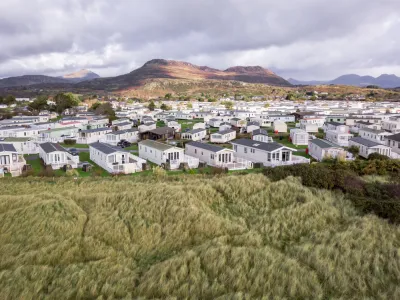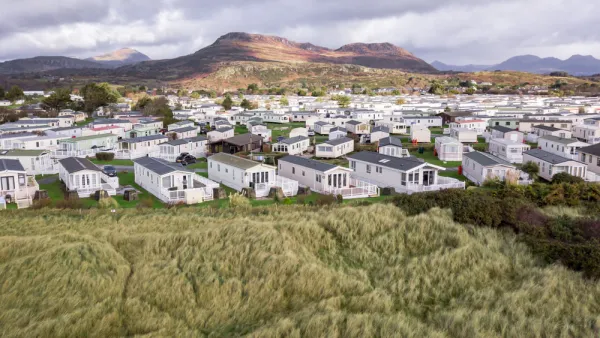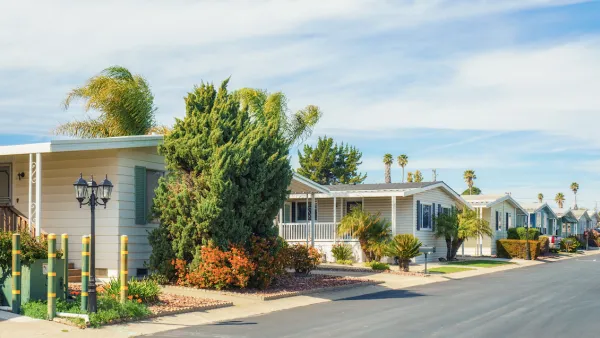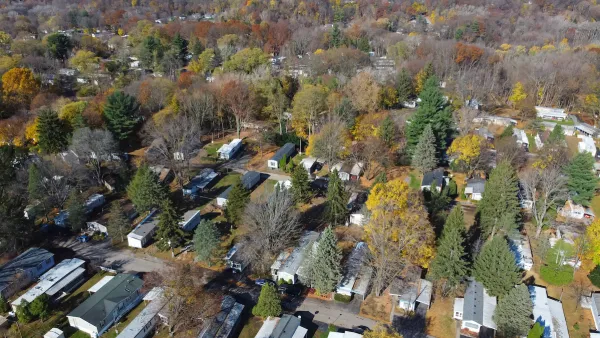It’s time to rethink the negative stereotypes and acknowledge the key role mobile home parks can play in solving the affordable housing crisis.

Stereotypes about manufactured housing are stifling a robust source of affordable housing. This is what Zachary Lamb, Jason Spicer, and Linda Shi argue in The Conversation, pointing out that “many people, including urban planners and affordable housing researchers, see manufactured housing parks as problems” rather than one solution to the housing crisis.
The authors outline and debunk four major stereotypes about mobile homes:
- “Manufactured housing is shoddy:” In fact, manufactured homes have to meet federal safety standards, and “Many quality problems associated with manufactured housing arise from home installation, park maintenance and infrastructure issues.”
- Manufactured housing is exploitative: While land leases can put residents at the mercy of landlords, as we have covered before, Resident Owned Communities offer a model that puts ownership and control in the hands of the people who live in the parks.
- Lack of density: The density of mobile home parks is often higher than surrounding neighborhoods, and 61 percent of manufactured housing is located in urban areas.
- Mobile home parks are isolated: While this is in some cases true, the authors point out that “this pattern applies to most U.S. residential neighborhoods built since World War II, including gated communities and cul-de-sacs,” and mobile home parks are often further isolated by local zoning regulations.
The article outlines the real obstacles to manufactured housing: an eagerness on the part of local officials to convert the land to “better” uses, the purchase of mobile home parks by investors, climate change and extreme weather, and aging infrastructure.
Some states are implementing solutions to make manufactured housing communities more sustainable, resilient, and affordable. At the federal level, “The Biden administration’s 2022 housing plan includes extensive support for manufactured housing parks.” The authors suggest coupling current efforts with legislation that expands tenant protections and supports opportunities for resident-owned and cooperative models to support more stable and resilient communities.
FULL STORY: Debunking stereotypes about mobile homes could make them a new face of affordable housing

National Parks Layoffs Will Cause Communities to Lose Billions
Thousands of essential park workers were laid off this week, just before the busy spring break season.

Retro-silient?: America’s First “Eco-burb,” The Woodlands Turns 50
A master-planned community north of Houston offers lessons on green infrastructure and resilient design, but falls short of its founder’s lofty affordability and walkability goals.

Delivering for America Plan Will Downgrade Mail Service in at Least 49.5 Percent of Zip Codes
Republican and Democrat lawmakers criticize the plan for its disproportionate negative impact on rural communities.

Test News Post 1
This is a summary

Test News Headline 46
Test for the image on the front page.

Balancing Bombs and Butterflies: How the National Guard Protects a Rare Species
The National Guard at Fort Indiantown Gap uses GIS technology and land management strategies to balance military training with conservation efforts, ensuring the survival of the rare eastern regal fritillary butterfly.
Urban Design for Planners 1: Software Tools
This six-course series explores essential urban design concepts using open source software and equips planners with the tools they need to participate fully in the urban design process.
Planning for Universal Design
Learn the tools for implementing Universal Design in planning regulations.
EMC Planning Group, Inc.
Planetizen
Planetizen
Mpact (formerly Rail~Volution)
Great Falls Development Authority, Inc.
HUDs Office of Policy Development and Research
NYU Wagner Graduate School of Public Service





























